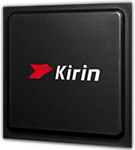
AMD A6-3500 Benchmark, Test and specs
Last updated:
The AMD A6-3500 is a 3 core processor. It can handle 3 threads simultaneously and was introduced in Q3/2011. The AMD A6-3500 is based on the 1. generation of the AMD A series and requires a mainboard with the socket FM1. The AMD A6-3500 scores 303 points with one CPU core in the Geekbench 5 benchmark. When using all CPU cores, the result is 766 points.
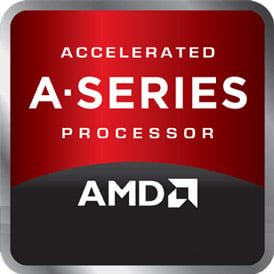
| Name: | AMD A6-3500 |
|---|---|
| Family: | AMD A (112) |
| CPU group: | AMD A6-3000 (5) |
| Architecture: | Llano (K10) |
| Segment: | Desktop / Server |
| Generation: | 1 |
| Predecessor: | -- |
| Successor: | -- |
CPU Cores and Base Frequency
The 3 CPU cores of the AMD A6-3500 clock with 2.10 GHz (2.40 GHz). The number of CPU cores and the clock frequency of the processor are largely responsible for the overall performance.
| CPU Cores / Threads: | 3 / 3 |
|---|---|
| Core architecture: | normal |
| Cores: | 3x |
| Hyperthreading / SMT: | No |
|---|---|
| Overclocking: | Yes |
| Frequency: | 2.10 GHz |
| Turbo Frequency (1 Core): | 2.40 GHz |
| Turbo Frequency (3 Cores): | 2.40 GHz |
Internal Graphics
With the AMD Radeon HD 6530D, the AMD A6-3500 has an build in graphic solution. It has 5 SM processors, which have a total of 320 texture shaders. The iGPU not only enables games, but also significantly accelerates video playback.
| GPU name: | AMD Radeon HD 6530D |
|---|---|
| GPU frequency: | 0.44 GHz |
| GPU (Turbo): | No turbo |
| Compute units: | 5 |
| Shader: | 320 |
| Hardware Raytracing: | No |
| Release date: | Q4/2010 |
| Max. displays: | 0 |
|---|---|
| Generation: | 3 |
| Direct X: | 11 |
| Technology: | 32 nm |
| Max. GPU Memory: | 1 GB |
| Frame Generation: | No |
Hardware codec support
Processors that have an integrated graphics can play videos faster and more efficiently. This can have a positive effect on the battery life of notebooks, for example.
| h265 / HEVC (8 bit): | No |
|---|---|
| h265 / HEVC (10 bit): | No |
| h264: | Decode |
| VP8: | No |
| VP9: | No |
| AV1: | No |
|---|---|
| AVC: | Decode |
| VC-1: | Decode |
| JPEG: | Decode / Encode |
Memory & PCIeThe AMD A6-3500 supports up to memory in up to 2 (Dual Channel) memory channels. This results in a maximum memory bandwidth of 25.6 GB/s. |
|
| Memory type: | Memory bandwidth: |
|---|---|
| DDR3-1600 | 25.6 GB/s |
| Max. Memory: | |
| Memory channels: | 2 (Dual Channel) |
| ECC: | No |
| PCIe: | |
| PCIe Bandwidth: | -- |
Thermal ManagementWith the TDP, the processor manufacturer specifies the cooling solution required for the processor. The AMD A6-3500 has a TDP of 65 W. |
|
|---|---|
| TDP (PL1 / PBP): | 65 W |
| TDP (PL2): | -- |
| TDP up: | -- |
| TDP down: | -- |
| Tjunction max.: | -- |
Technical details
The AMD A6-3500 has a 3.00 MB large cache. The processor is manufactured in 32 nm. Modern production increases the efficiency of the processor.
| Technology: | 32 nm |
|---|---|
| Chip design: | |
| Socket: | FM1 |
| L2-Cache: | -- |
| L3-Cache: | 3.00 MB |
| AES-NI: | No |
| Operating systems: | Windows 10, Linux |
| Virtualization: | AMD-V |
|---|---|
| Instruction set (ISA): | x86-64 (64 bit) |
| ISA extensions: | SSE3, SSE4a |
| Release date: | Q3/2011 |
| Release price: | 47 $ |
| Part Number: | -- |
| Documents: | -- |
Rate this processor
Benchmark results

The benchmark results for the AMD A6-3500 have been carefully checked by us. We only publish benchmark results that have been created by us or that have been submitted by a visitor and then checked by a team member. All results are based on and fullfill our benchmark guidelines.
Geekbench 5, 64bit (Single-Core)
Geekbench 5 is a cross plattform benchmark that heavily uses the systems memory. A fast memory will push the result a lot. The single-core test only uses one CPU core, the amount of cores or hyperthreading ability doesn't count.

|
AMD Athlon II X4 605e
4C 4T @ 2.30 GHz |
||

|
Intel Pentium E2200
2C 2T @ 2.20 GHz |
||

|
MediaTek Helio X30
10C 10T @ 2.60 GHz |
||
|
|
AMD A6-3500
3C 3T @ 2.40 GHz |
||

|
Intel Pentium T4300
2C 2T @ 2.10 GHz |
||

|
AMD Athlon II X3 415e
3C 3T @ 2.50 GHz |
||
|
|
HiSilicon Kirin 710A
8C 8T @ 2.00 GHz |
||
Geekbench 5, 64bit (Multi-Core)
Geekbench 5 is a cross plattform benchmark that heavily uses the systems memory. A fast memory will push the result a lot. The multi-core test involves all CPU cores and taks a big advantage of hyperthreading.

|
MediaTek MT8173
4C 4T @ 1.80 GHz |
||

|
AMD Athlon II X2 250e
2C 2T @ 3.00 GHz |
||

|
AMD Phenom II X2 555
2C 2T @ 3.20 GHz |
||
|
|
AMD A6-3500
3C 3T @ 2.40 GHz |
||
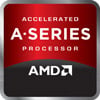
|
AMD A8-7100
4C 4T @ 2.40 GHz |
||
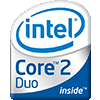
|
Intel Core2 Duo E7400
2C 2T @ 2.80 GHz |
||

|
AMD Athlon II X3 400e
3C 3T @ 2.20 GHz |
||
Cinebench R20 (Single-Core)
Cinebench R20 is the successor of Cinebench R15 and is also based on the Cinema 4 Suite. Cinema 4 is a worldwide used software to create 3D forms. The single-core test only uses one CPU core, the amount of cores or hyperthreading ability doesn't count.

|
Intel Core i3-2330M
2C 4T @ 2.20 GHz |
||

|
AMD A6-3650
4C 4T @ 2.60 GHz |
||

|
AMD Athlon II X4 630
4C 4T @ 2.80 GHz |
||
|
|
AMD A6-3500
3C 3T @ 2.40 GHz |
||

|
AMD Athlon II X4 620e
4C 4T @ 2.60 GHz |
||

|
AMD Athlon II X4 620
4C 4T @ 2.60 GHz |
||

|
AMD A10-7350B
4C 4T @ 3.30 GHz |
||
Cinebench R20 (Multi-Core)
Cinebench R20 is the successor of Cinebench R15 and is also based on the Cinema 4 Suite. Cinema 4 is a worldwide used software to create 3D forms. The multi-core test involves all CPU cores and taks a big advantage of hyperthreading.

|
Intel Core i3-2330M
2C 4T @ 2.20 GHz |
||

|
Intel Core M-5Y10c
2C 4T @ 1.60 GHz |
||

|
Intel Pentium N4200
4C 4T @ 2.50 GHz |
||
|
|
AMD A6-3500
3C 3T @ 2.40 GHz |
||

|
Intel Celeron N3450
4C 4T @ 2.20 GHz |
||

|
AMD A8-6410
4C 4T @ 2.40 GHz |
||

|
Intel Celeron N4500
2C 2T @ 2.40 GHz |
||
iGPU - FP32 Performance (Single-precision GFLOPS)
The theoretical computing performance of the internal graphics unit of the processor with simple accuracy (32 bit) in GFLOPS. GFLOPS indicates how many billion floating point operations the iGPU can perform per second.

|
Intel Core i3-4100E
Intel HD Graphics 4600 @ 0.90 GHz |
||

|
Intel Core i3-4102E
Intel HD Graphics 4600 @ 0.90 GHz |
||

|
AMD A4-3305M
AMD Radeon HD 6480G @ 0.59 GHz |
||
|
|
AMD A6-3500
AMD Radeon HD 6530D @ 0.44 GHz |
||

|
AMD A6-3670K
AMD Radeon HD 6530D @ 0.44 GHz |
||

|
AMD A6-3650
AMD Radeon HD 6530D @ 0.44 GHz |
||

|
AMD A6-3620
AMD Radeon HD 6530D @ 0.44 GHz |
||
Estimated results for PassMark CPU Mark
Some of the CPUs listed below have been benchmarked by CPU-monkey. However the majority of CPUs have not been tested and the results have been estimated by a CPU-monkey’s secret proprietary formula. As such they do not accurately reflect the actual Passmark CPU mark values and are not endorsed by PassMark Software Pty Ltd.

|
Intel Core i3-4330TE
2C 4T @ 2.40 GHz |
||

|
Qualcomm Snapdragon 632
8C 8T @ 1.80 GHz |
||

|
Intel Core i7-2655LE
2C 4T @ 2.20 GHz |
||
|
|
AMD A6-3500
3C 3T @ 2.40 GHz |
||

|
Intel Core i5-3317U
2C 4T @ 1.70 GHz |
||

|
AMD Phenom II X2 550
2C 2T @ 3.10 GHz |
||

|
AMD A8-3800
4C 4T @ 2.70 GHz |
||
Cinebench R15 (Multi-Core)
Cinebench R15 is the successor of Cinebench 11.5 and is also based on the Cinema 4 Suite. Cinema 4 is a worldwide used software to create 3D forms. The multi-core test involves all CPU cores and taks a big advantage of hyperthreading.

|
Intel Celeron G1820T
2C 2T @ 2.40 GHz |
||

|
Intel Celeron 3965U
2C 2T @ 2.20 GHz |
||

|
AMD Phenom II X2 560
2C 2T @ 3.30 GHz |
||
|
|
AMD A6-3500
3C 3T @ 2.40 GHz |
||

|
Intel Pentium Gold 4425Y
2C 4T @ 1.60 GHz |
||

|
Intel Core M-5Y10
2C 4T @ 1.60 GHz |
||

|
Intel Core M-5Y10a
2C 4T @ 1.60 GHz |
||
Benchmarks

Geekbench 5 (SC)
2,488 entries
2,488 entries

Geekbench 5 (MC)
2,461 entries
2,461 entries

Cinebench R20 (SC)
656 entries
656 entries

Cinebench R20 (MC)
604 entries
604 entries

FP32 SP (iGPU)
2,039 entries
2,039 entries
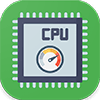
PassMark CPU-Mark
2,392 entries
2,392 entries

Cinebench R15 (MC)
1,101 entries
1,101 entries

Geekbench 3 (SC)
942 entries
942 entries

Geekbench 3 (MC)
938 entries
938 entries

Cinebench R11.5 (MC)
836 entries
836 entries
Popular comparisons
back to index



